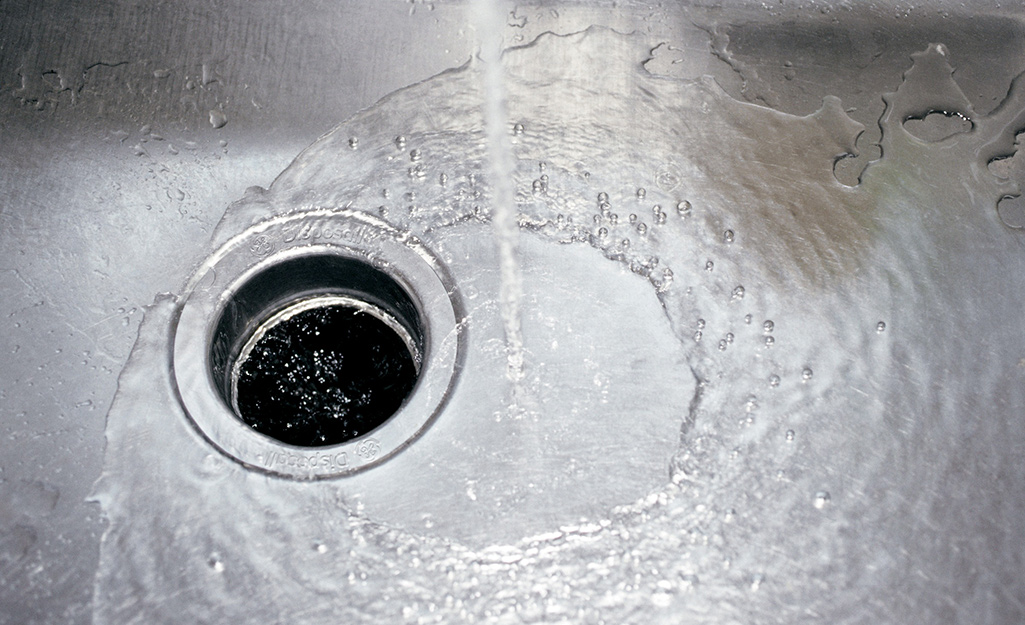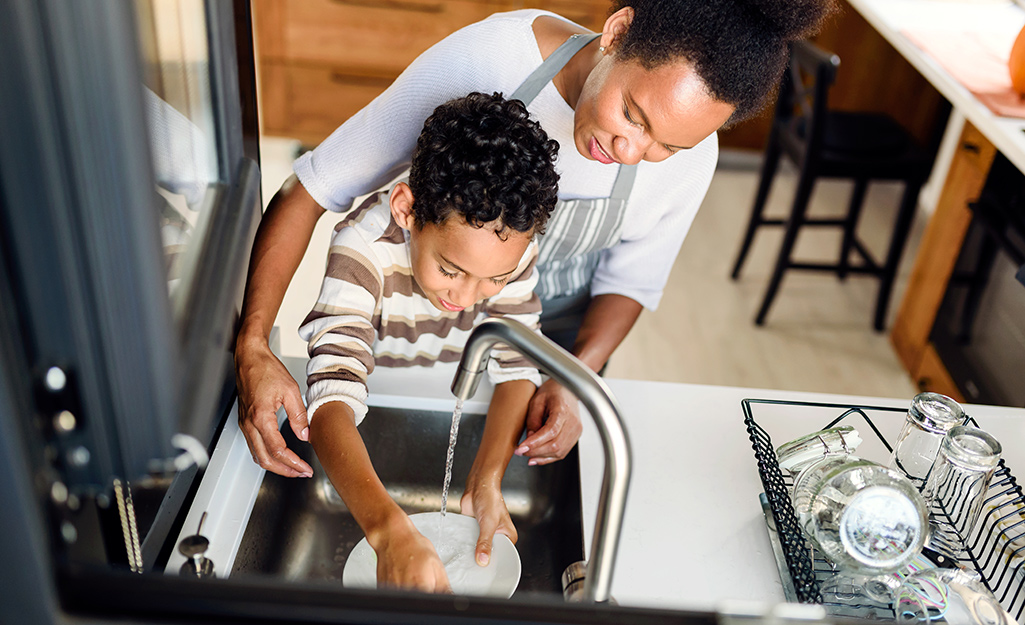1. Basic Garbage Disposal Maintenance

As you figure out how to fix a clogged garbage disposal, it might be helpful to know a little more about how it works. Installed underneath your sink, garbage disposal takes in solid food waste. You might think that the disposal chops up the food, but that’s not the case.
Two impellers on a spinning ring throw food against a stationary grinding ring inside the disposal. The impellers are sometimes called blades, though they are not sharp. The grinding ring breaks the food into tiny pieces, making it nearly liquid.
Running water washes the ground food out of the disposal. Only run cold water into your disposal. If fats and oils are stuck in the garbage disposal, hot water can break them down and create clogs.
The drainpipe can get backed up when you don’t use enough water while the disposal is running. Dropping something into your garbage disposal by accident can also clog it. Putting food into the disposal too quickly can block it, too.
When your disposal isn’t working correctly, you should try to fix it right away. If you run the motor without unclogging a garbage disposal, you can burn it out.
How do you unclog a garbage disposal? Follow these steps:
- Turn off the power to the jammed disposer and unplug it.
- Use a flat plunger to clear any standing water in the sink. Made to work best on flat surfaces, a flat plunger creates a better seal in a kitchen sink than the flange plungers typically used to unclog toilets.
- You can also scoop the water out of the sink and into a bucket.
- Once the power is off, look inside the opening with a flashlight to see what is jamming it.
- Remove the waste using small tongs or needle-nose pliers.
- Restore the power.
- Run water in the sink.
- Try to rerun the disposer.
Tip: If it’s a particularly difficult clog while the power is still off, insert a broom handle into the drain opening and try to free the impellers.
2. Reset the Disposal and Turn the Impellers

- Turn off the power. Check the bottom of the garbage disposal unit. Find the reset button and press it, then turn on the power to test it.
- If the disposal is still stuck, turn the power back off. Insert a 1/4-inch Allen wrench into the hex socket on the bottom.
- The socket is connected to the impellers. Using the hex key, turn the impellers in both directions to free them up.
- Do not try to loosen any nuts or bolts inside the grinding chamber, as they hold the unit together.
- Turn the power back on and try again.
Tip: Some companies make oversized jam-busting Allen wrench tools designed for garbage disposals.
3. Prevent Garbage Disposal Clogs

As you learn how to unclog a garbage disposal, you’ll realize that it can’t handle all your food waste. Being careful about what you put into the disposal can help prevent clogs.
- Avoid putting corn cobs, artichokes, avocado pits, chicken bones and fish bones into your garbage disposal.
- Don’t grind up eggshells or coffee grounds. When these materials go through a garbage disposal, they are turned into tiny pieces of debris that can easily get caught on anything else in the pipe. As the particles of ground shells or coffee accumulate, they can cause a clog.
- Putting potato peels into your garbage disposal is like filling it with mashed potatoes. The starch in the ground-up skins causes a clog that can easily stop things up.
- Don’t slip any banana peels down your disposal. These starchy skins can cause the same issue that potato skins do.
- Never pour grease or liquid fat into your garbage disposal. As these fats solidify, they clump up and block the flow of food and water.
- Read the instruction manual that came with your garbage disposal to find a specific list of what you can and can’t put into it.
Figuring out how to unclog the garbage disposal can keep the water in your kitchen sink running freely. As you’re unclogging a garbage disposal, work safely by disconnecting the power. To prevent future clogs, don’t scrape plates into the sink carelessly. Be cautious about what you put into your disposal.
Unclogging garbage disposal can be a DIY project. If you can’t clear the clog yourself, it may be time to call in the professionals to fix or replace the disposal. We can help with plumbing repair and garbage disposal installation services.
Drain Cleaning
-
Toilet
-
Sink
-
Shower
Hydro Jetting
-
Tree roots removal
-
Grease Removal
-
Camera Inspection
Emergency Service Fee
-
Leaks
-
Drain Clogs
-
No Hot Water


